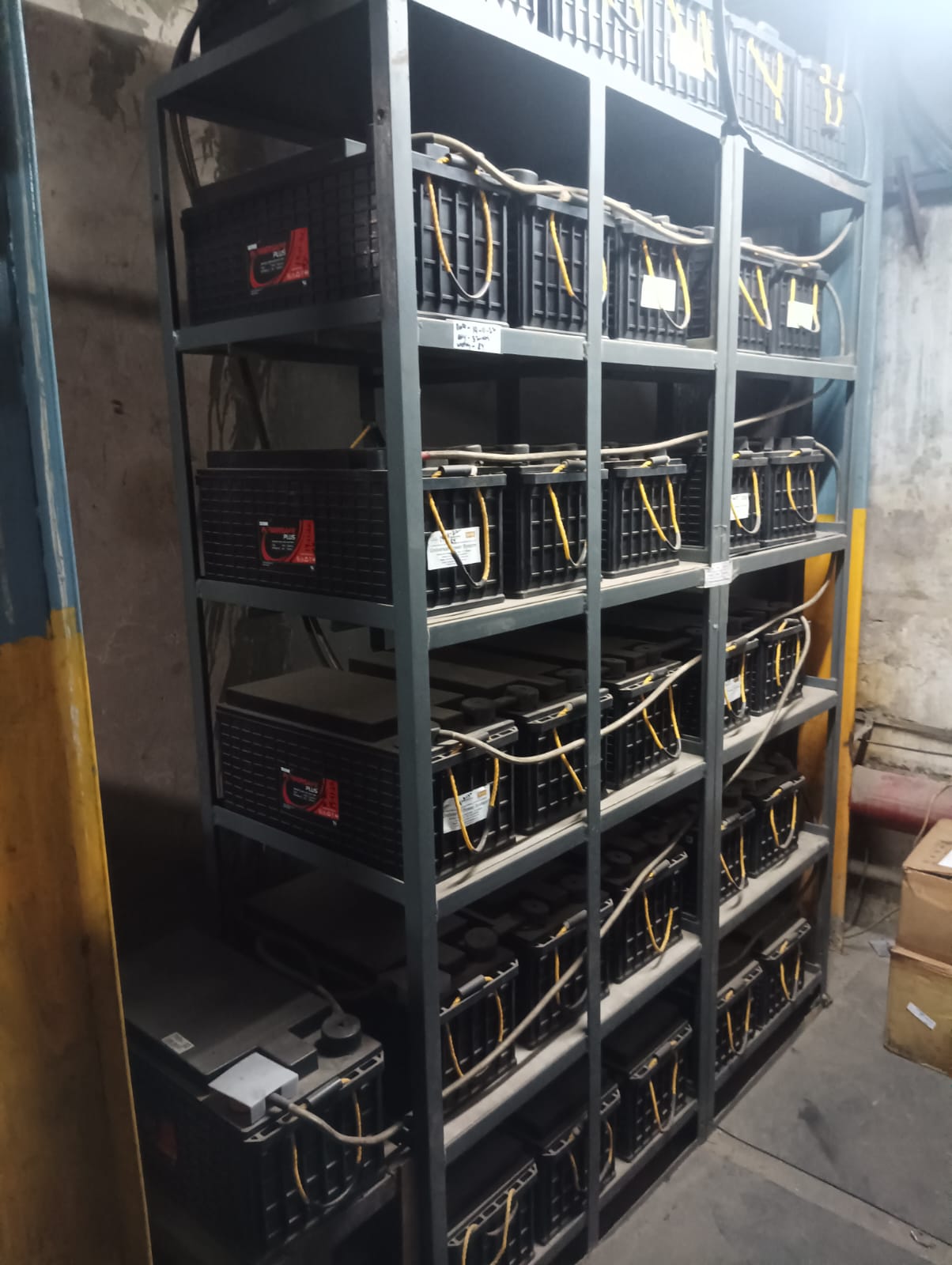The Amaron Quanta 12V 130Ah batteries are lead-acid batteries typically used for solar power storage, backup power systems, and other applications that require reliable energy storage. Here's a detailed overview of this battery: Key Features of Amaron Quanta 12V 130Ah Battery: Battery Type: Lead-Acid: This is a type of flooded or sealed (VRLA) lead-acid battery, suitable for deep cycle applications. 12V System: Designed for systems that operate on a 12V DC supply, often used in small-scale solar energy systems, inverters, and backup power setups. Capacity: 130Ah (Ampere-hour): This indicates the battery’s storage capacity. It means the battery can deliver 130 amps for 1 hour or 1 amp for 130 hours at a nominal voltage of 12V. For example, if the system uses 1A of current, the battery will last for around 130 hours before needing a recharge. Applications: Solar Power Systems: To store energy generated by solar panels. UPS (Uninterruptible Power Supply): Provides backup during power outages. Off-Grid Systems: Stores energy for homes or businesses in remote areas. Electric Vehicles and RVs: Sometimes used for backup and auxiliary power. Charging and Discharging: Charging: The battery can be charged through solar panels, inverters, or a regular charger. It is recommended to avoid deep discharges to extend the battery life. Discharging: It should not be discharged fully for longevity. Typically, a depth of discharge (DoD) of 50% to 70% is ideal for long-term use. Battery Life: Cycle Life: Typically, a lead-acid battery like the Amaron Quanta 12V 130Ah can last around 3-5 years, depending on usage and maintenance. Proper charging and maintenance (like keeping the terminals clean and ensuring adequate ventilation) can improve the lifespan of the battery. Advantages: Reliable and Cost-Effective: Lead-acid batteries are typically less expensive than other types of batteries, like lithium-ion. Widely Available: Amaron is a well-known brand, and their batteries are widely available and easy to replace. Maintenance: Flooded Lead-Acid: If it’s a flooded type, you may need to periodically check the water levels and top up with distilled water. VRLA (Valve-Regulated Lead-Acid): If it's a sealed type, it requires less maintenance as it’s sealed and does not need water refills. Specifications: Voltage: 12V Capacity: 130Ah Weight: Around 40-45 kg (approx.), depending on the specific model and construction type. Dimensions: Varies by model, but typically it is about 410mm (L) x 175mm (W) x 240mm (H). Conclusion: The Amaron Quanta 12V 130Ah battery is a good choice for off-grid solar systems, backup power applications, or any system requiring long-lasting energy storage. It offers a solid balance of performance, cost-effectiveness, and reliability. Proper care and maintenance will ensure it provides reliable service for years to come.
Send Message







